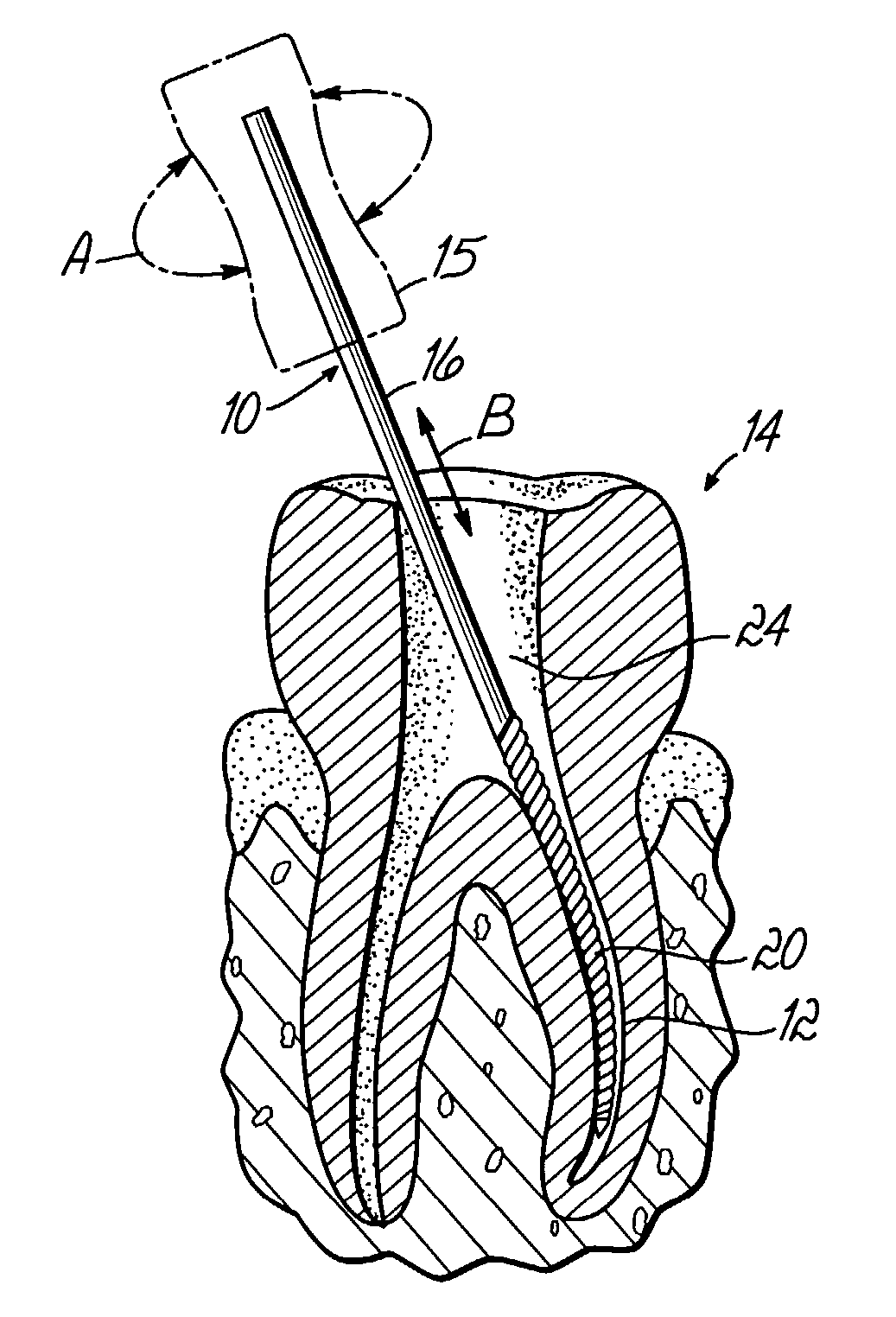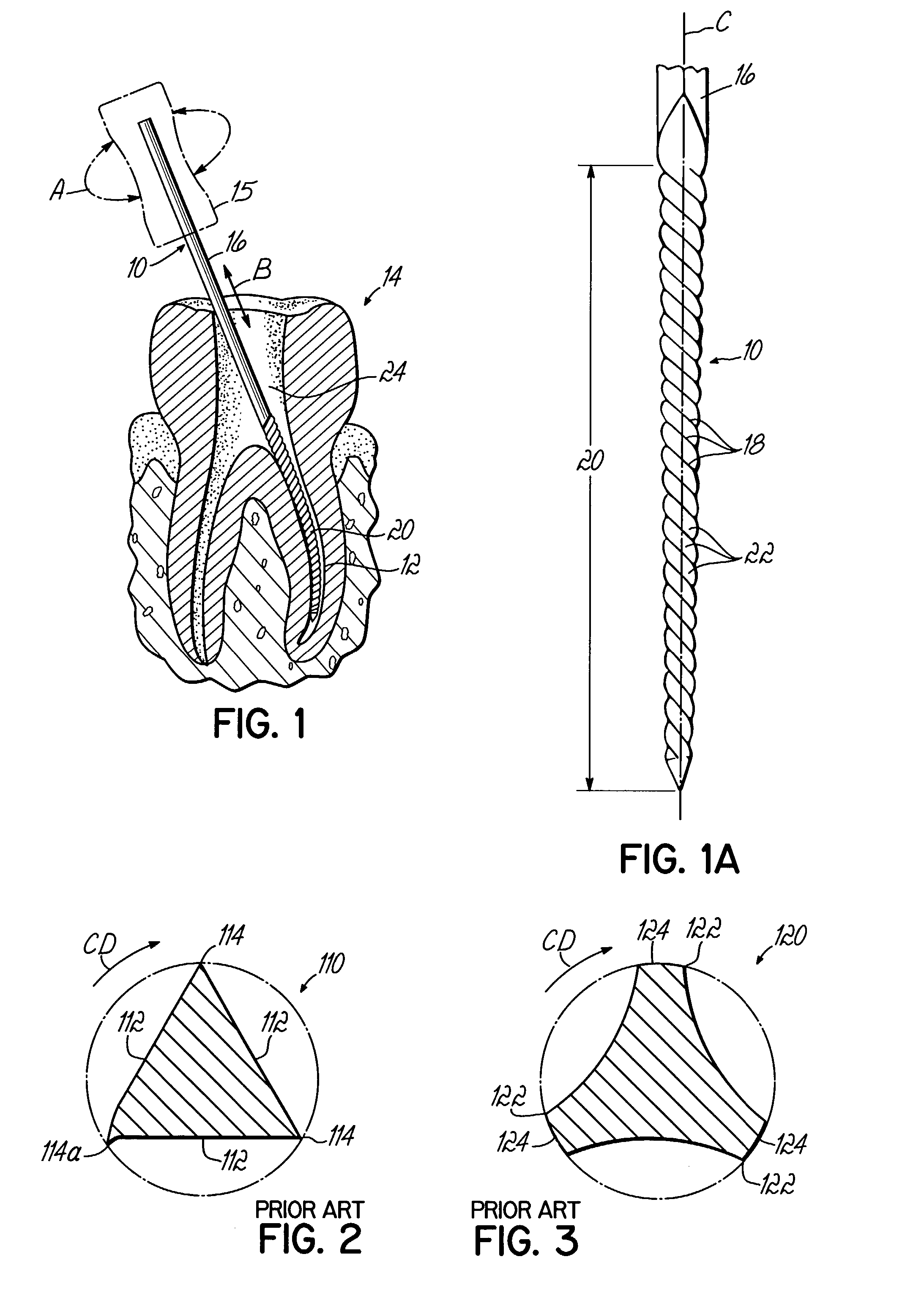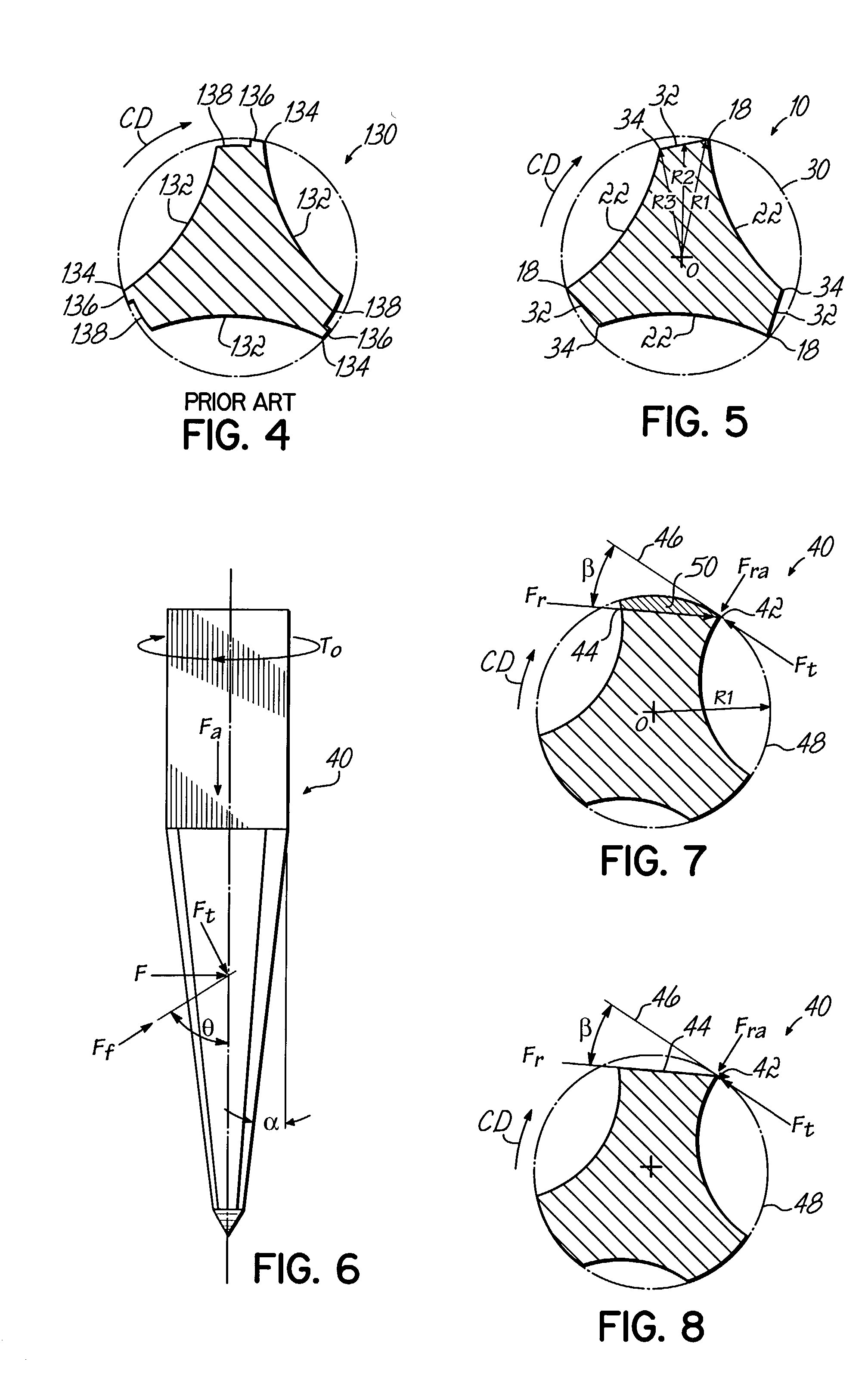Endodontic instrument
a technology of endodontic instruments and endodontic fillings, applied in the field of endodontic instruments, can solve the problems of reducing the effectiveness of endodontic instruments, reducing the friction between the file and the tooth, and making instruments, so as to reduce the amount of friction generated within the canal, and reduce the effect of friction within the canal
- Summary
- Abstract
- Description
- Claims
- Application Information
AI Technical Summary
Benefits of technology
Problems solved by technology
Method used
Image
Examples
Embodiment Construction
[0021]Referring to FIGS. 1–2, there is shown an exemplary endodontic instrument 10 of the present invention being used to shape a root canal 12 of a tooth 14. The endodontic instrument 10 includes a handle 15 for manual gripping by, for example, an endodontist and an elongate shaft 16 having cutting edges 18 for shaping the tooth 14. A portion of the shaft 16 comprises a working length 20 having helical flutes 22 which form the cutting edges 18 of the endodontic instrument 10. In use, the working length 20 of the instrument 10 is inserted into a root canal 12 of a tooth 14 through an upper interior portion 24 of the tooth 14 which has been initially opened using another instrument, such as a drill (not shown). Although files and reamers are typically manipulated manually, the instrument 10 of the present invention may be adapted for use with power operated equipment as well. In a conventional manner, the instrument 10 may be rotated in the direction of arrows A and / or reciprocated i...
PUM
 Login to View More
Login to View More Abstract
Description
Claims
Application Information
 Login to View More
Login to View More - R&D
- Intellectual Property
- Life Sciences
- Materials
- Tech Scout
- Unparalleled Data Quality
- Higher Quality Content
- 60% Fewer Hallucinations
Browse by: Latest US Patents, China's latest patents, Technical Efficacy Thesaurus, Application Domain, Technology Topic, Popular Technical Reports.
© 2025 PatSnap. All rights reserved.Legal|Privacy policy|Modern Slavery Act Transparency Statement|Sitemap|About US| Contact US: help@patsnap.com



